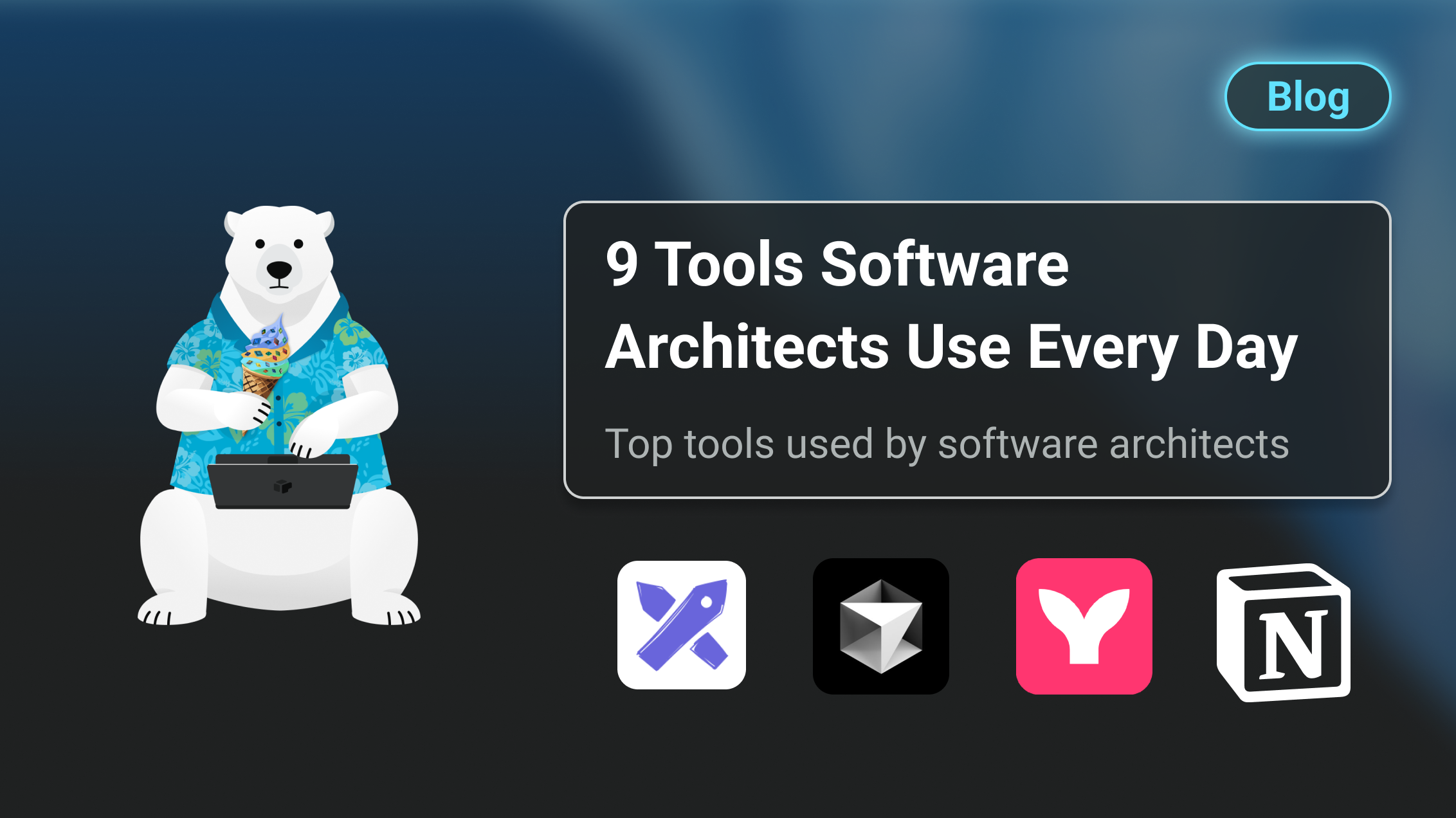Introduction
Engineers always have this itch to make their development setups more efficient, automated, and customisable. Architects are no different. They’re creative problem-solvers who love to fix their own pain points, configure their setups, and experiment with new tools recommended by their colleagues. Software architects depend on a diverse toolkit for different tasks: diagramming, programming, documentation, and collaboration. Let’s go over 9 essential tools that software architects use for maximum productivity!
1. Excalidraw
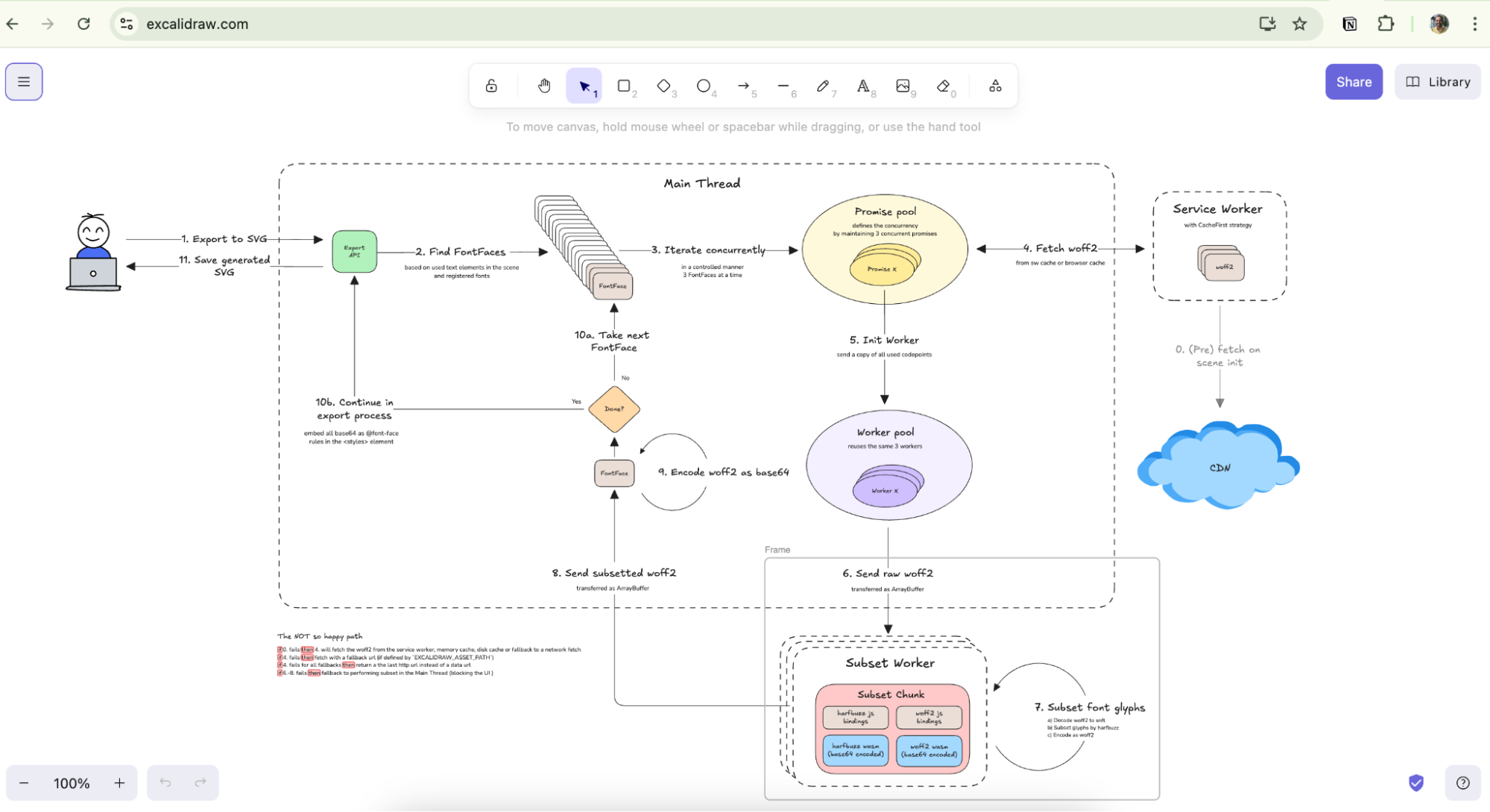
Excalidraw is the go-to tool for sketching out ideas, technical designs, and conducting system design interviews. Architects find this tool useful for its simplicity. They use simple notation to draw abstract systems and technical components for design reviews and presentations. However, it’s not an ideal tool for documenting final architecture designs. It mainly serves as a canvas for new prototypes, ideas, or explaining technical concepts.
2. ChatGPT
ChatGPT has become the new Google search for many architects. They use it for faster research, brainstorming ideas, and generating various types of documentation (e.g., technical design documents). Pro users often rely on custom GPTs tailored to specific architectural tasks or use the latest models (e.g., GPT-4o) for specialised workflows like API design or architecture documentation. Here is an example of customised GPTs: https://chatgpt.com/gpts
3. Cursor
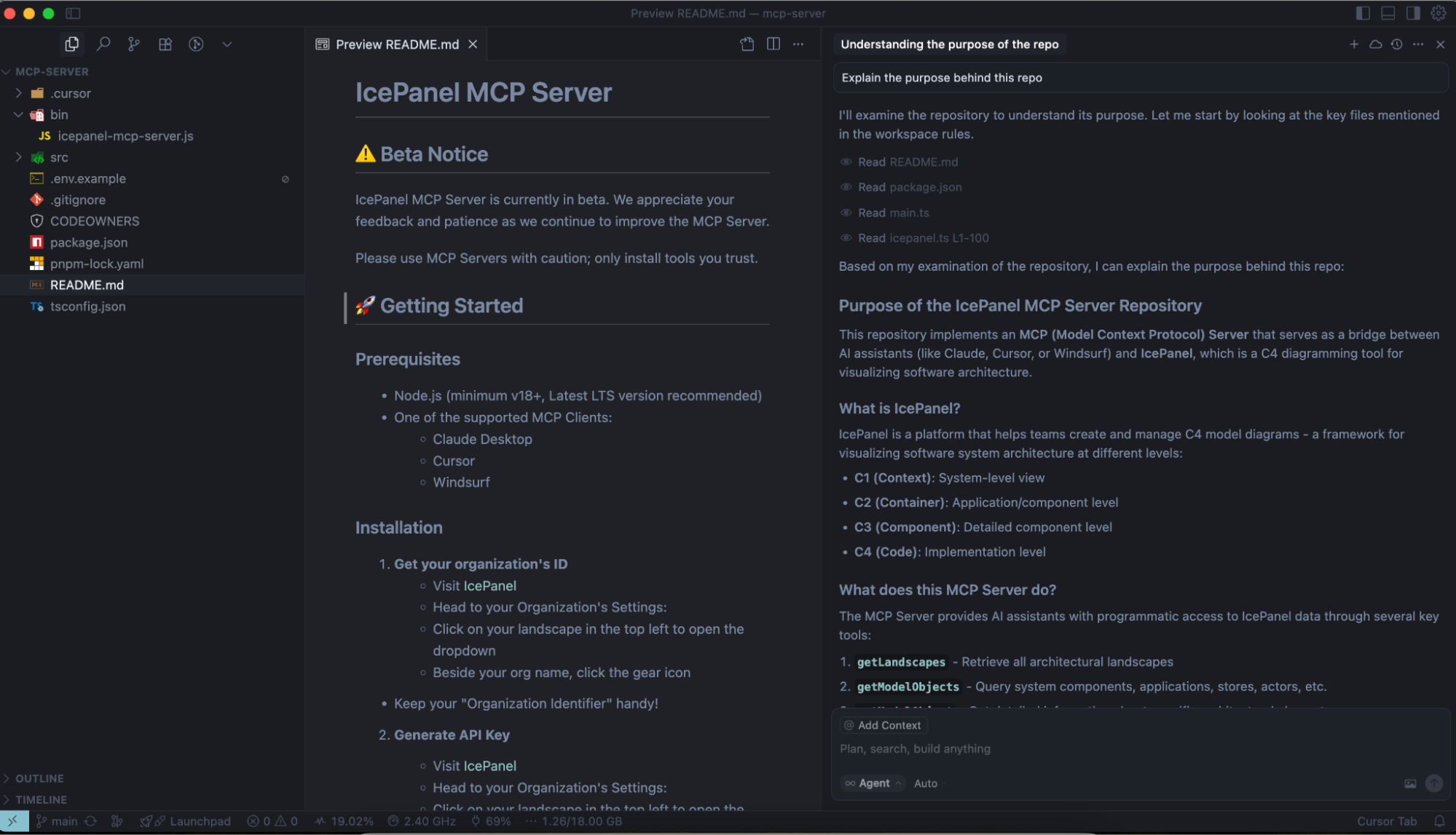
Cursor is an AI-powered code editor (VSCode fork) that has become a game changer for the developer experience. It integrates with frontier LLMs from model providers like Claude (Anthropic), Gemini (Google), GPT (OpenAI), and many more.
Software architects use Cursor to delegate many coding tasks to AI agents and significantly maximise their developer productivity. They can generate boilerplate code, write documentation, and prototype solutions by pressing Tab Tab! ⚡️
The real value comes in the time saved from the repetitive tasks, allowing architects to focus more on the high-level design decisions.
P.S. Some architects also recommend Windsurf as their preferred AI editor!
4. Obsidian
Obsidian is a powerful knowledge vault. It is a note-taking app that empowers architects to build their Second Brain. It has key features like:
- Quick notes in Markdown format for capturing ideas.
- Bidirectional linking for creating relationships between notes.
- Canvas mode for visual diagramming.
- A plugin ecosystem with 2,500+ community-built extensions for maximum productivity.
Obsidian syncs data across multiple devices (laptop, iOS, Android) and generates an interactive graph view for visualising knowledge relationships. Architects appreciate the ability to organise notes with custom tags and create templates for recurring documentation patterns.
While it excels as a personal digital notebook, it’s not designed for team collaboration, making it suitable for individual research, meeting notes, and idea development.
5. Lucidchart
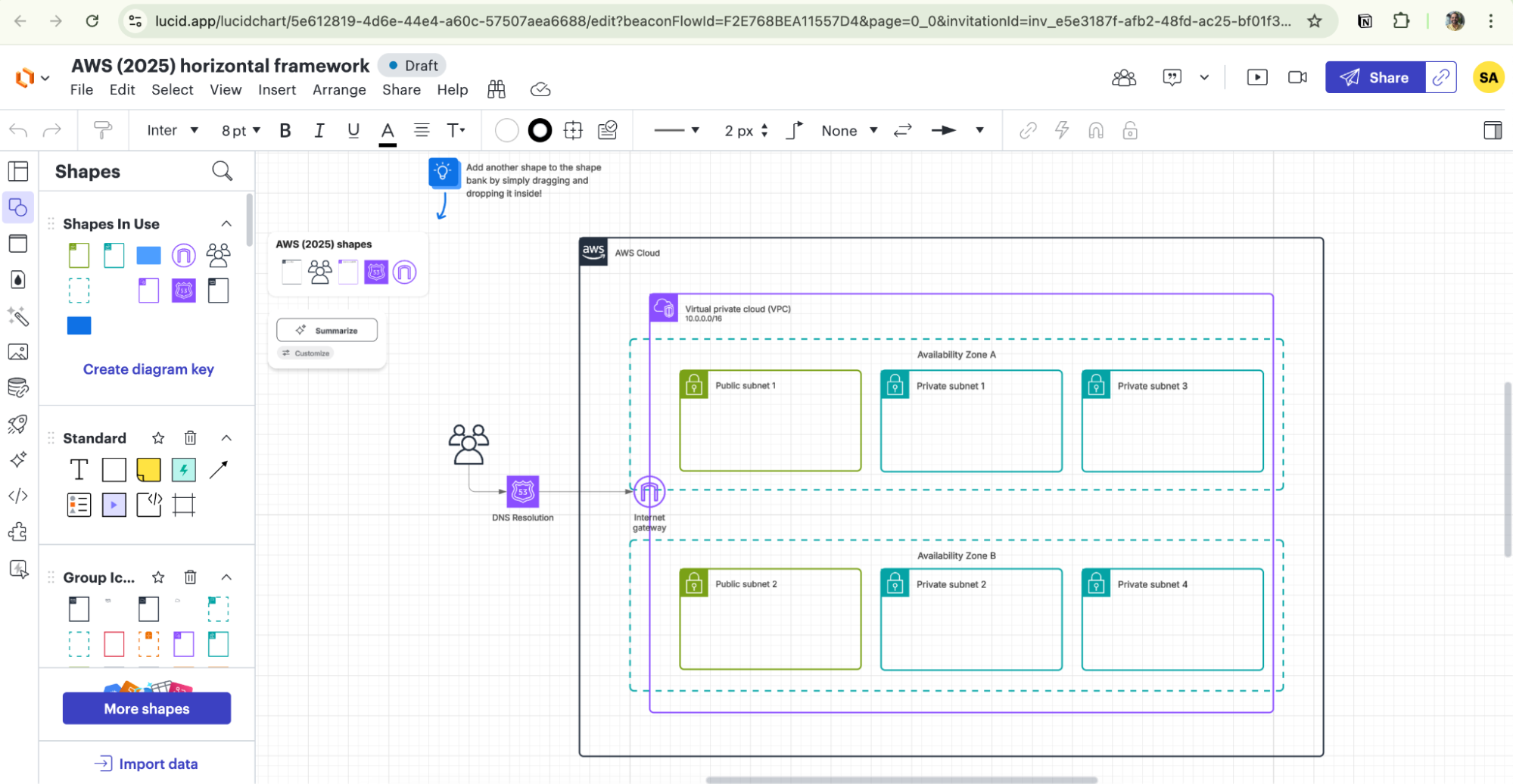
Lucidchart is a diagramming tool designed for modeling complex systems and processes. Architects commonly use it for designing cloud infrastructure via icons and templates from cloud providers like AWS, Azure, and GCP.
Although Lucidchart is a popular choice for designing complex systems, it often falls short when it comes to documenting these systems at scale and layering them using the C4 Model. Learn more about how diagramming tools compare to modelling tools here.
6. Ghostty
Ghostty is a high-performance, cross-platform terminal that leverages GPU acceleration for optimal speed and responsiveness. Architects don’t heavily use this in their daily workflows, but it does provide configuration options for custom keybindings, shortcuts, and plugins for fast navigation and editing!
iTerm2 is another option that architects use, but limited to only macOS.
7. Mermaid
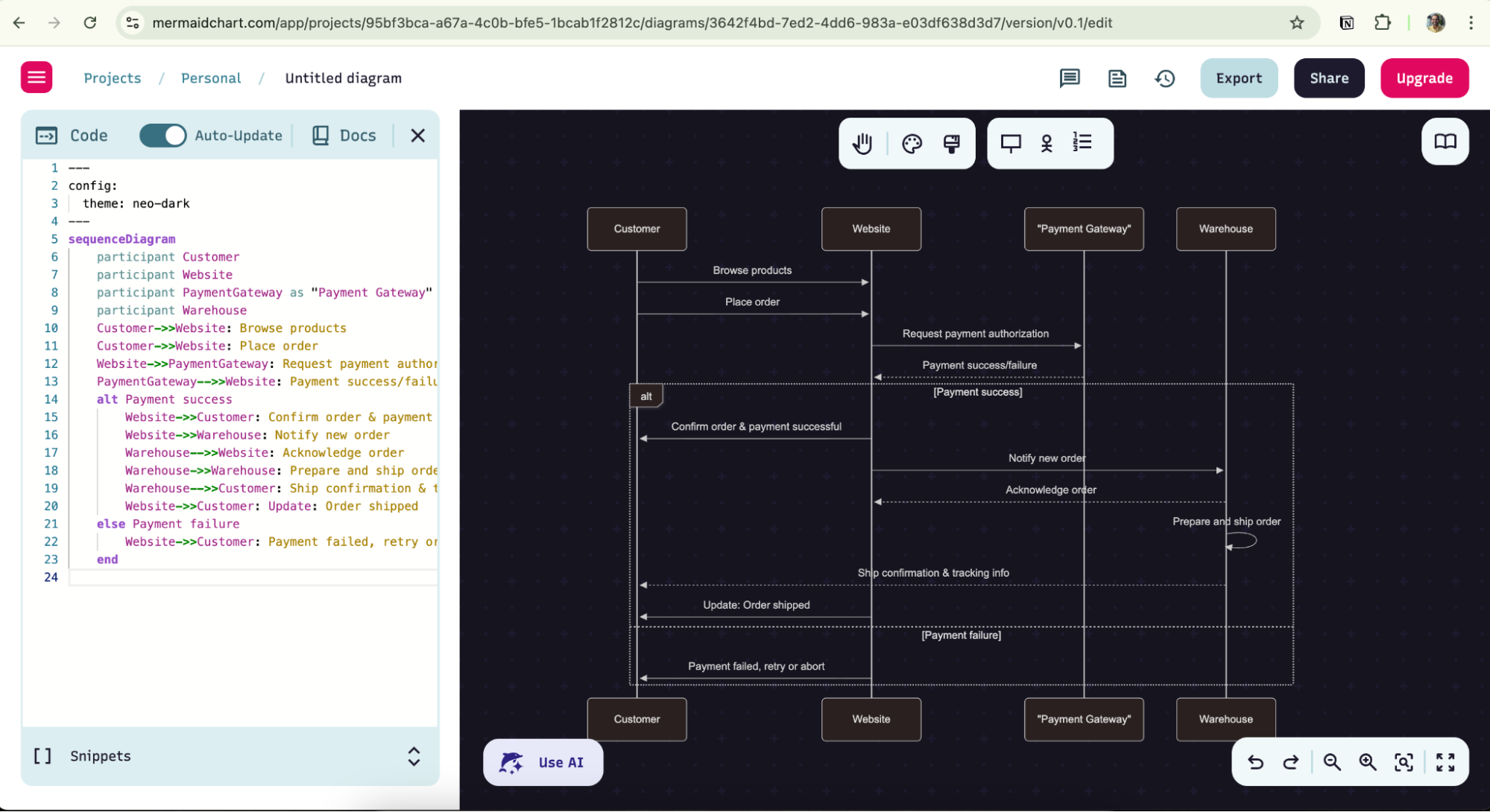
Mermaid.js is an open-source diagramming tool that architects use to generate diagrams from plain text. The Mermaid syntax is fairly intuitive and especially useful for sharing diagrams with their teams alongside their code or documentation (e.g., flowcharts, sequence diagrams, and architecture sketches).
Architects particularly value Mermaid for enabling living documentation that stays in sync with code changes and can be easily shared across teams.
8. Notion
Notion is an all-in-one workspace that combines project planning, documentation, and team collaboration. Architects use Notion for writing architectural decision records (ADRs), design proposals, technical specifications, and general documentation. It also serves as a central hub for managing projects and building a shared team knowledge base. Notion is a powerful collaboration tool, but it is not purpose-built for architectural documentation.
9. Shortcut
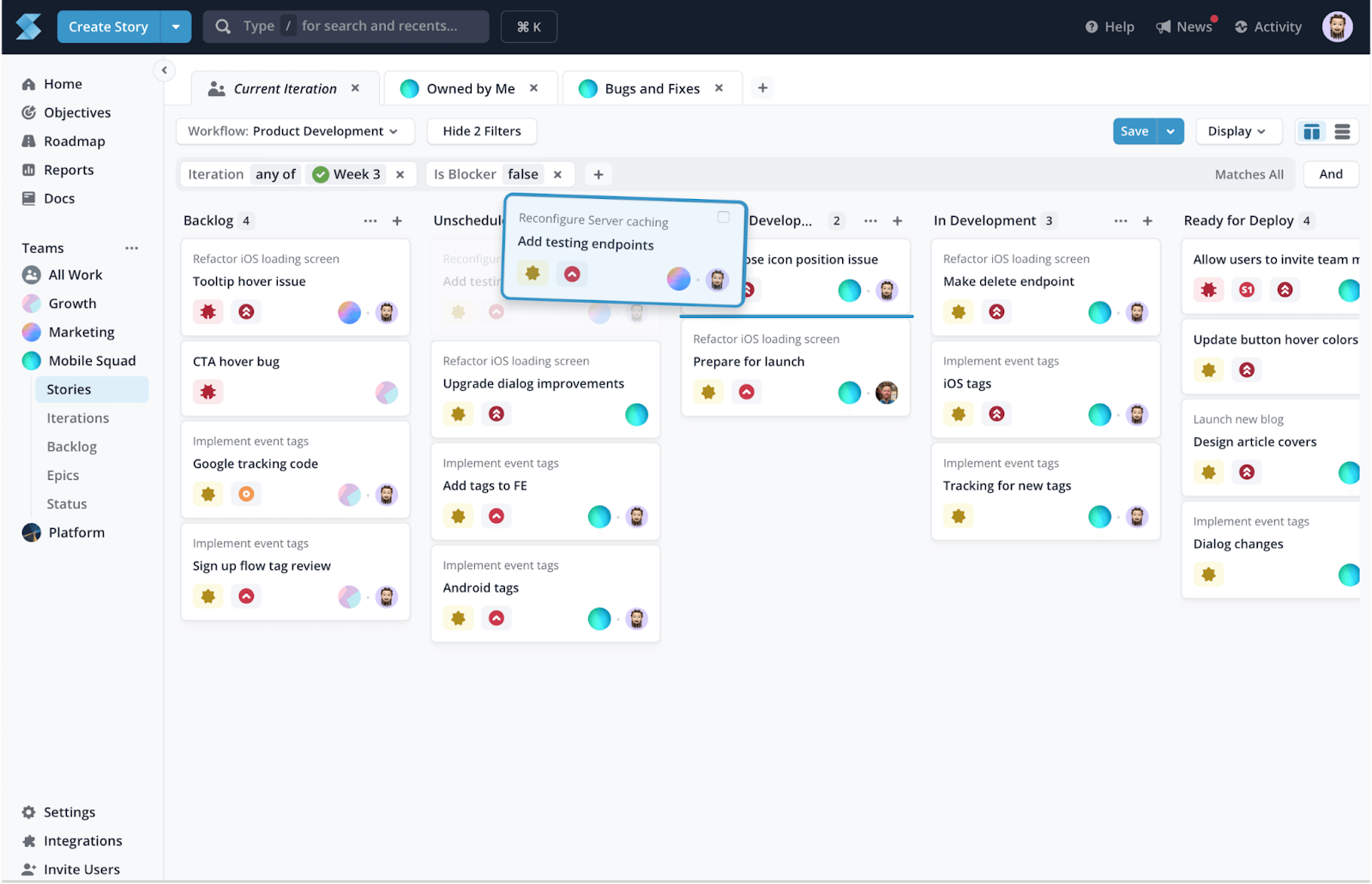
Shortcut is a project management software designed for development teams. Architects use Shortcut for tracking architectural initiatives, coordinating cross-team dependencies, and maintaining visibility into development progress. It also serves as a central hub for linking architectural decisions to specific features and epics, ensuring alignment between high-level design and implementation work.
Other alternatives are JIRA, Asana, and monday.com.
IcePanel 🧊
While some diagramming tools (like LucidChart) tend to create visual knowledge silos, IcePanel creates a knowledge graph of interconnected diagrams that makes it easier to get full context and collaborate with software architects and their teams.
Conclusion
Software architects’ core responsibilities primarily center on ADRs, HLDs, and ITSM. However, the modern architect’s toolkit extends beyond traditional diagramming tools. It includes additional AI-powered solutions that help architects focus more on strategic thinking and critical decisions, and less on repetitive tasks. Selecting the right set of tools is essential for staying productive and efficient across all areas: diagramming, programming, documentation, and collaboration.
Have you come across a great tool for software architects? Let us know your thoughts below 👇
